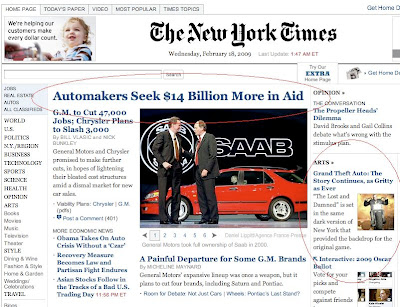WSJ Letter: This year marks the 100th anniversary of the drug war, which started in 1909 with the prohibition of opium processed for smoking. Over the course of the past 100 years, more substances have been banned and enforcement has become more brutal. Despite these measures, the percentage of Americans addicted to drugs has increased.
WSJ Article: Much as Pakistan is fighting for survival against Islamic radicals, Mexico is waging a do-or-die battle with the world's most powerful drug cartels. Last year, some 6,000 people died in drug-related violence here, more than twice the number killed the previous year. The dead included several dozen who were beheaded, a chilling echo of the scare tactics used by Islamic radicals. Mexican drug gangs even have an unofficial religion: They worship La Santa Muerte, a Mexican version of the Grim Reaper.
In growing parts of the country, drug gangs now extort businesses, setting up a parallel tax system that threatens the government monopoly on raising tax money. In Ciudad Juarez, just across the border from El Paso, Texas, handwritten signs pasted on schools warned teachers to hand over their Christmas bonuses or die. A General Motors distributorship at a midsize Mexican city was extorted for months at a time, according to a high-ranking Mexican official. A GM spokeswoman in Mexico had no comment.
"We are at war," says Aldo Fasci, a good-looking lawyer who is the top police official for Nuevo Leon state, where Monterrey is the capital. "The gangs have taken over the border, our highways and our cops. And now, with these protests, they are trying to take over our cities."
WSJ Editorial: The war on drugs has failed. And it's high time to replace an ineffective strategy with more humane and efficient drug policies. This is the central message of the report by the Latin American Commission on Drugs and Democracy we presented to the public recently in Rio de Janeiro.
Prohibitionist policies based on eradication, interdiction and criminalization of consumption simply haven't worked. Violence and the organized crime associated with the narcotics trade remain critical problems in our countries. Latin America remains the world's largest exporter of cocaine and cannabis, and is fast becoming a major supplier of opium and heroin. Today, we are further than ever from the goal of eradicating drugs.
Over the last 30 years, Colombia implemented all conceivable measures to fight the drug trade in a massive effort where the benefits were not proportional to the resources invested. Despite the country's achievements in lowering levels of violence and crime, the areas of illegal cultivation are again expanding. In Mexico -- another epicenter of drug trafficking -- narcotics-related violence has claimed more than 5,000 lives in the past year alone.
The revision of U.S.-inspired drug policies is urgent in light of the rising levels of violence and corruption associated with narcotics. The alarming power of the drug cartels is leading to a criminalization of politics and a politicization of crime. And the corruption of the judicial and political system is undermining the foundations of democracy in several Latin American countries.
 Blogging today from the Kansas City airport, with some Missouri history trivia.
Blogging today from the Kansas City airport, with some Missouri history trivia. 























